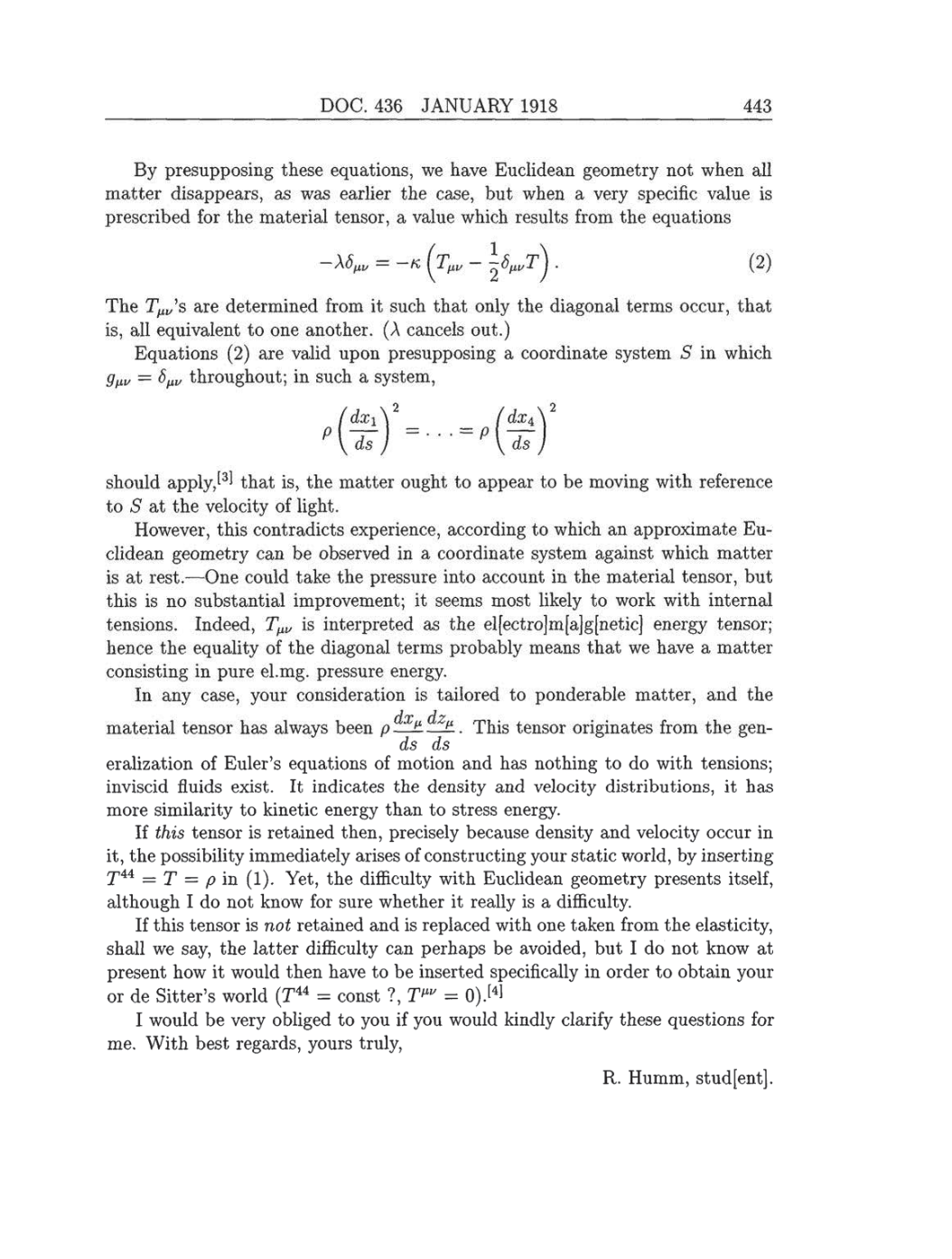DOC.
436
JANUARY
1918 443
By presupposing
these
equations,
we
have Euclidean
geometry
not when all
matter
disappears,
as was
earlier
the
case,
but
when
a
very specific
value
is
prescribed
for
the material
tensor,
a
value which results from
the
equations
-Aduv =-K,
(t).
(2)
The
Tuv's
are
determined from it such
that
only
the
diagonal
terms occur,
that
is,
all
equivalent
to
one
another.
(A
cancels
out.)
Equations
(2)
are
valid
upon presupposing
a
coordinate
system
S
in which
guv
=
duv
throughout;
in such
a
system,
p(dx1/ds)2
=
...
=
p(dx4/ds)2
should
apply,[3]
that is
matter
ought
to
appear
to
be
moving
with
reference
to
S
at
the
velocity
of
light.
However,
this contradicts
experience, according
to which
an
approximate
Eu-
clidean
geometry
can
be observed
in
a
coordinate
system
against
which matter
is
at
rest.-One
could
take
the
pressure
into account in
the material
tensor,
but
this
is
no
substantial
improvement;
it
seems
most
likely
to work
with internal
tensions.
Indeed,
Tuv
is interpreted
as
the
el[ectro]m[a]g[netic]
energy tensor;
hence
the
equality
of
the
diagonal
terms
probably
means
that
we
have
a
matter
consisting
in
pure el.mg.
pressure
energy.
In
any case, your
consideration
is
tailored
to
ponderable
matter,
and the
material
tensor
has
always
been
pdxudzu/dsds.
This tensor
originates
from the
gen-
eralization of Euler’s
equations
of
motion and has
nothing
to
do with
tensions;
inviscid fluids exist. It indicates the
density
and
velocity
distributions,
it has
more
similarity
to
kinetic
energy
than
to stress
energy.
If this tensor
is
retained
then,
precisely
because
density
and
velocity
occur
in
it,
the
possibility immediately
arises of
constructing your
static
world, by
inserting
T44
=
T
=
p
in
(1).
Yet,
the
difficulty
with
Euclidean
geometry
presents itself,
although I
do not know for
sure
whether it
really
is
a difficulty.
If this tensor is not retained and is
replaced
with
one
taken from
the
elasticity,
shall
we
say,
the latter
difficulty
can
perhaps
be
avoided,
but
I
do
not
know at
present
how
it
would
then
have
to
be inserted
specifically
in order to
obtain
your
or
de Sitter’s world
(T44 =
const
?,
Tuv
=
0).[4]
I
would be
very obliged
to
you
if
you
would
kindly clarify
these
questions
for
me.
With best
regards, yours truly,
R.
Humm,
stud[ent].
